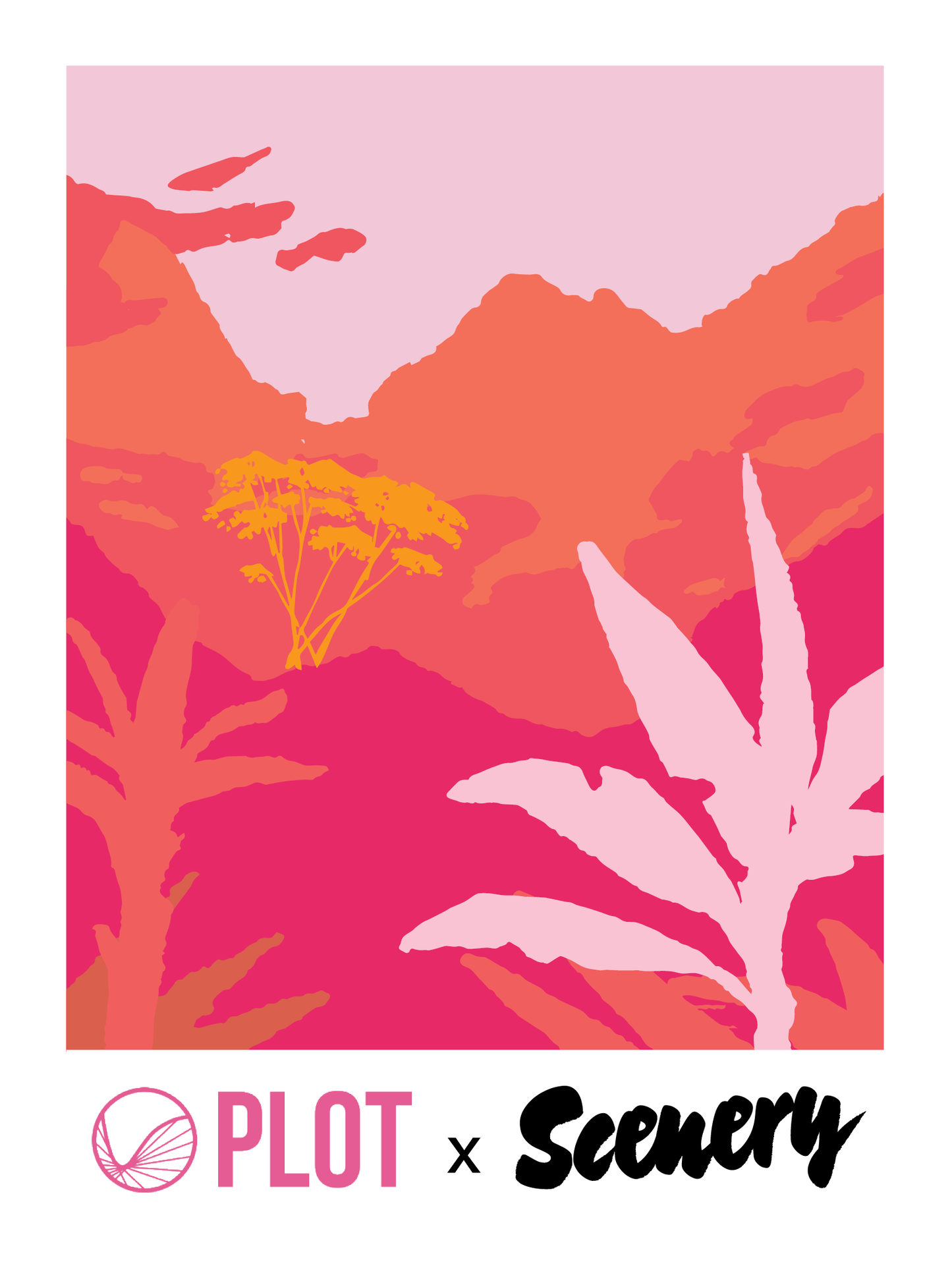
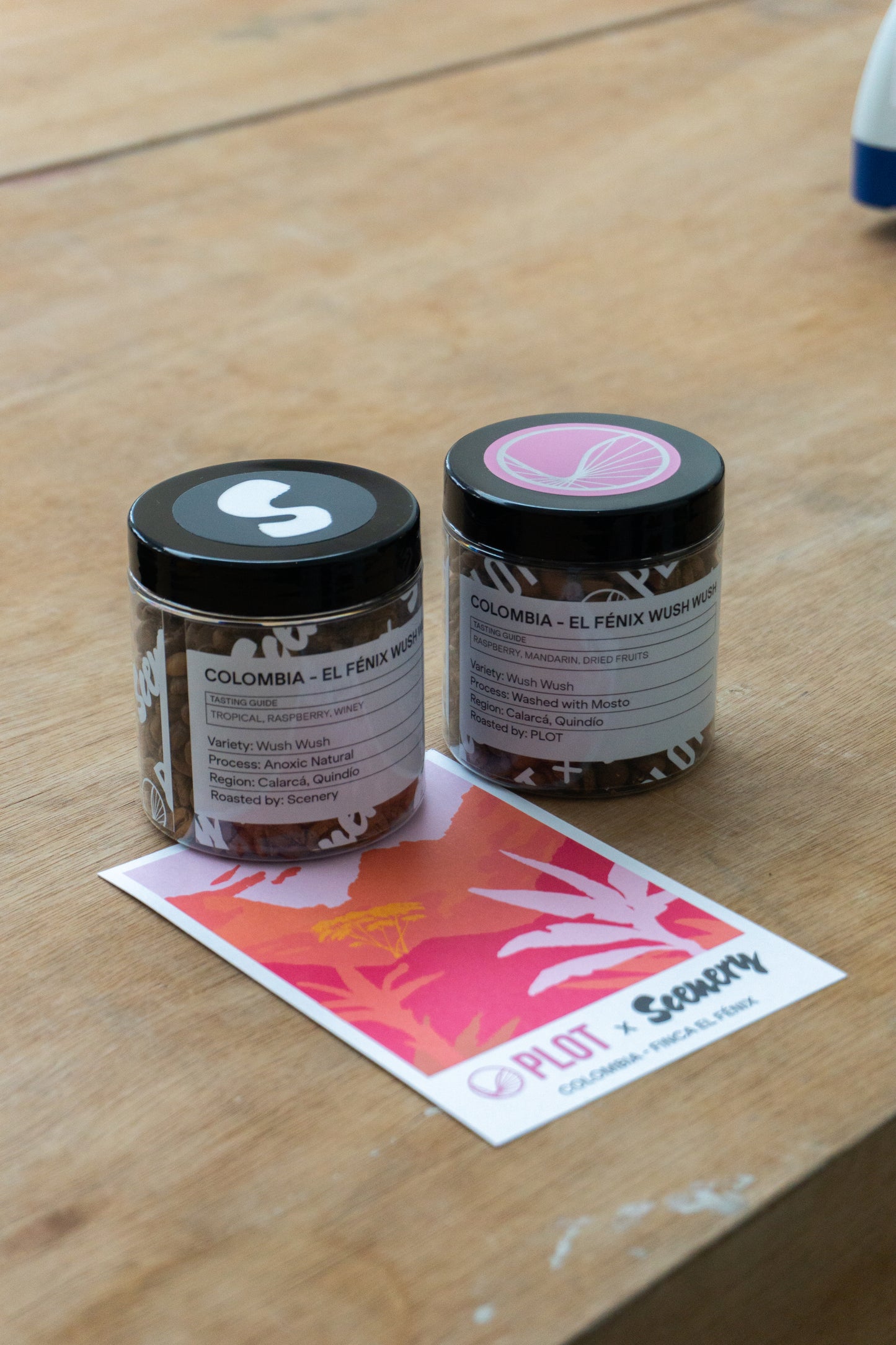
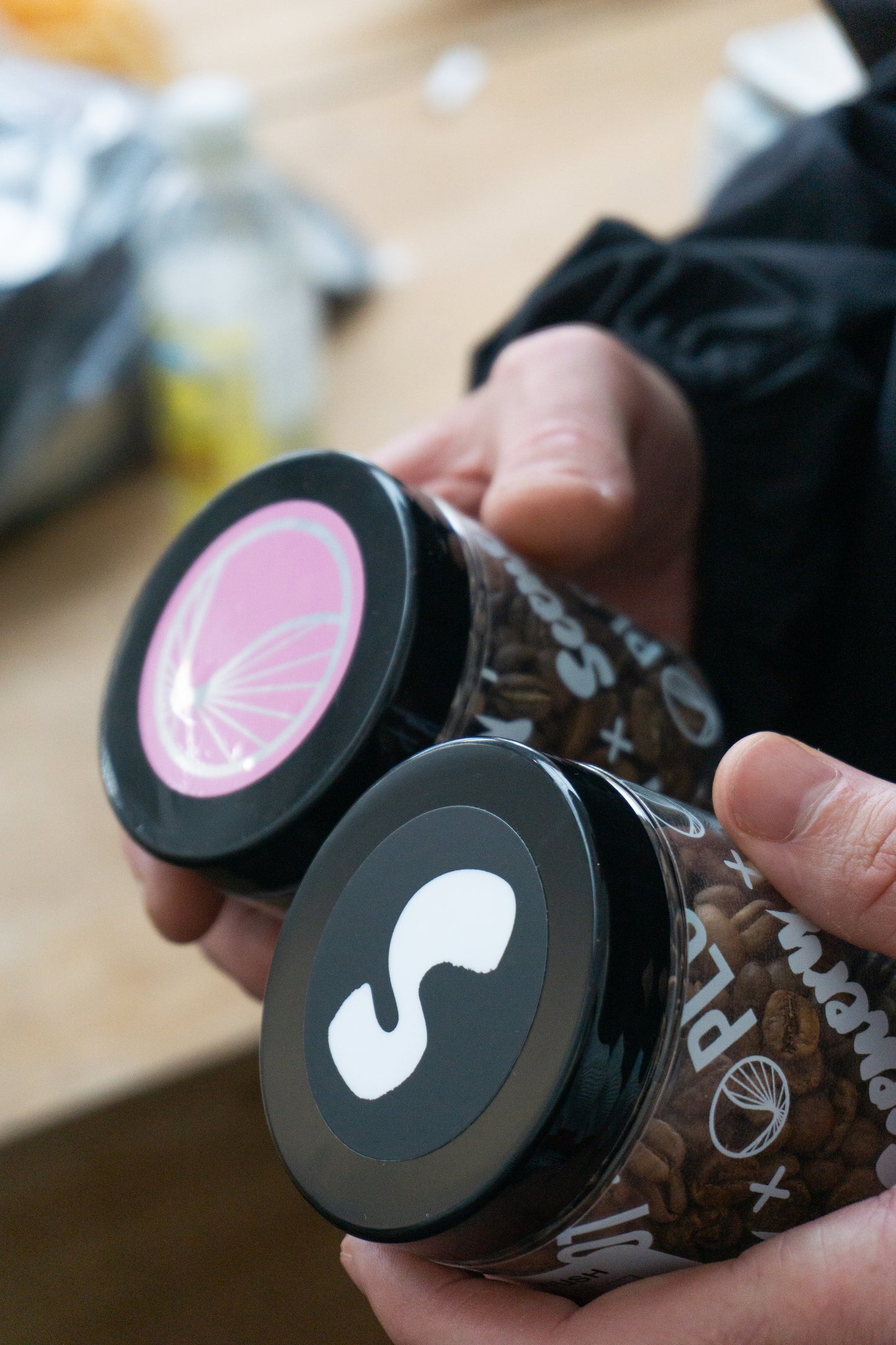
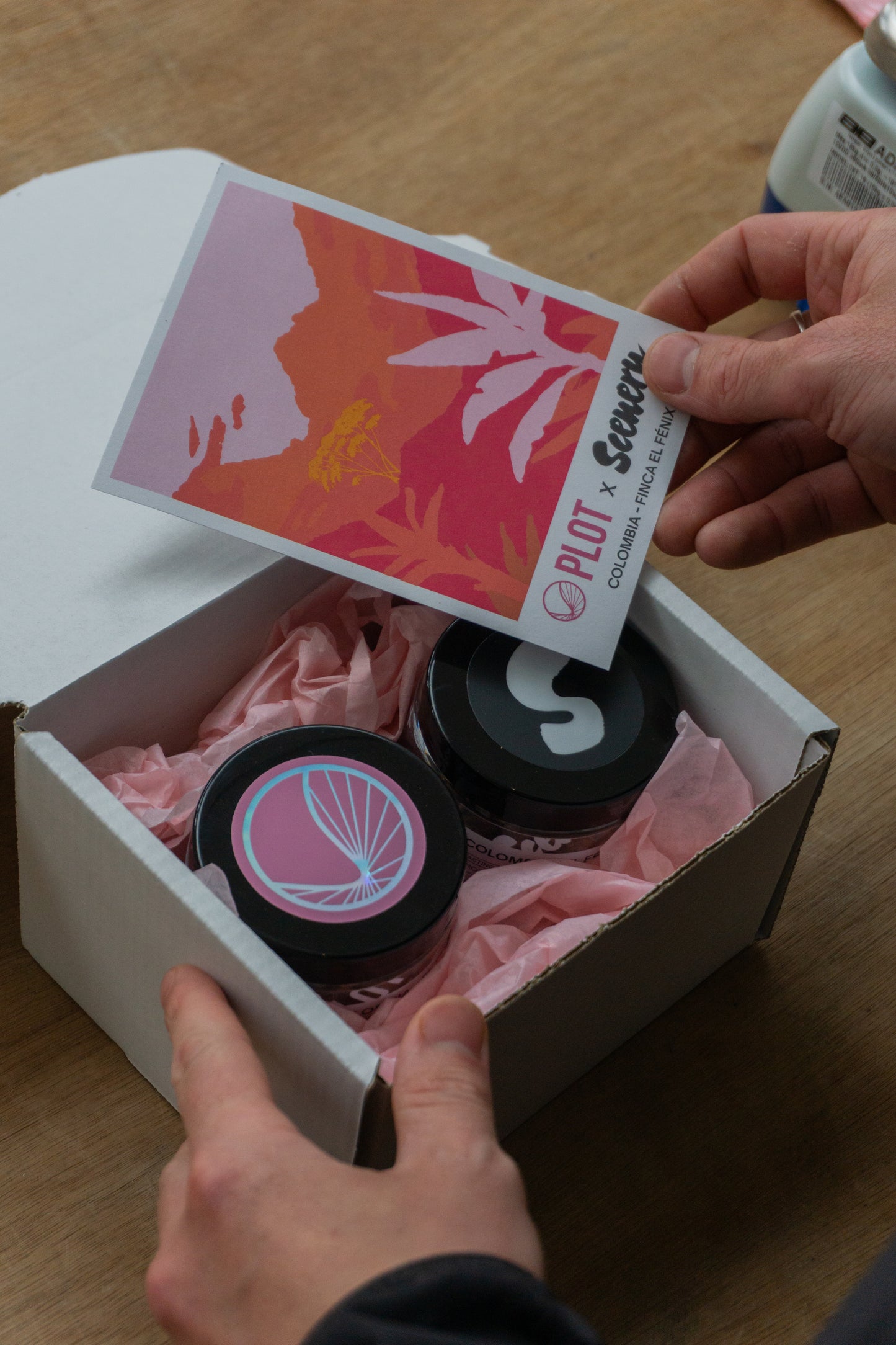
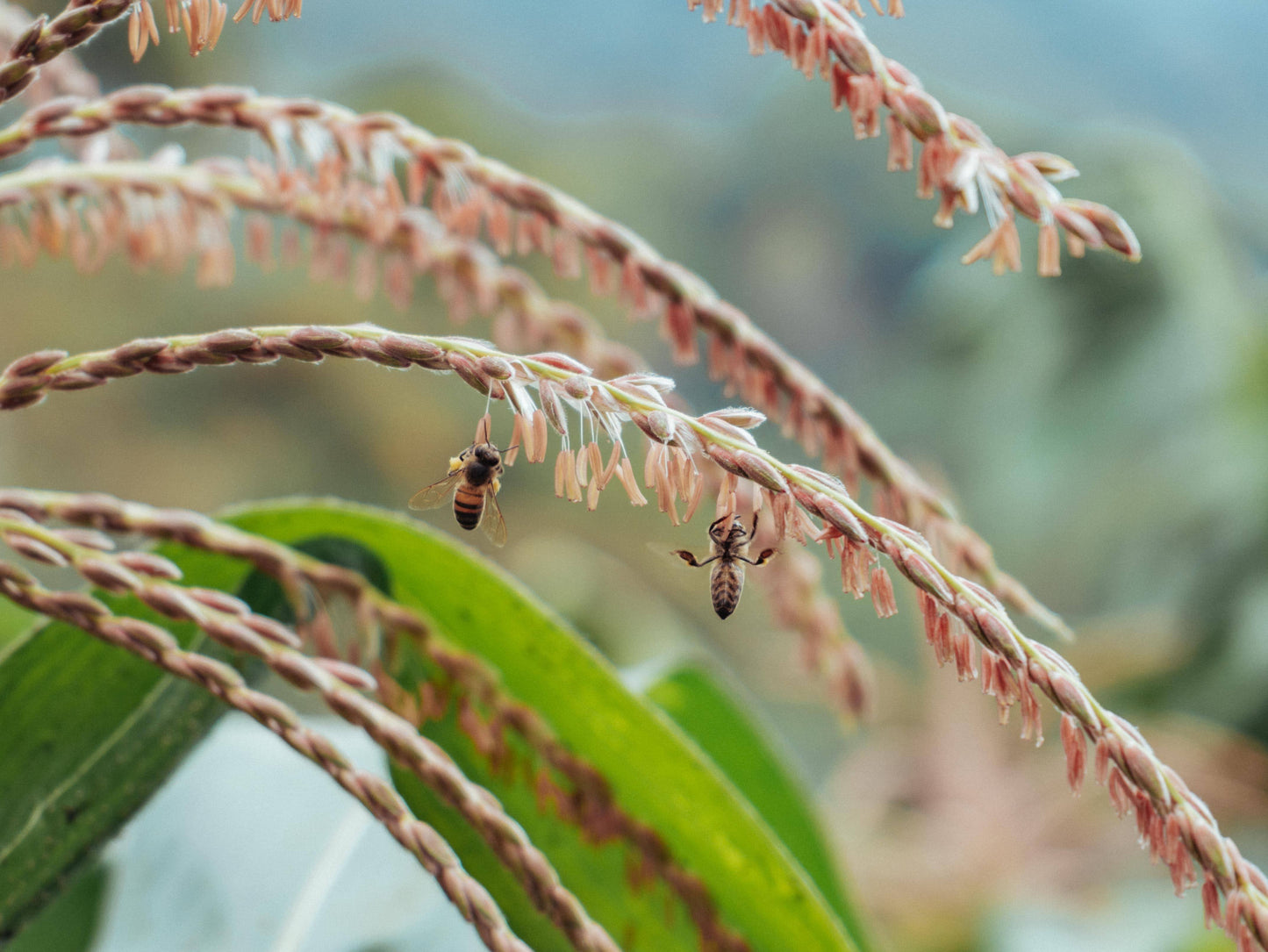
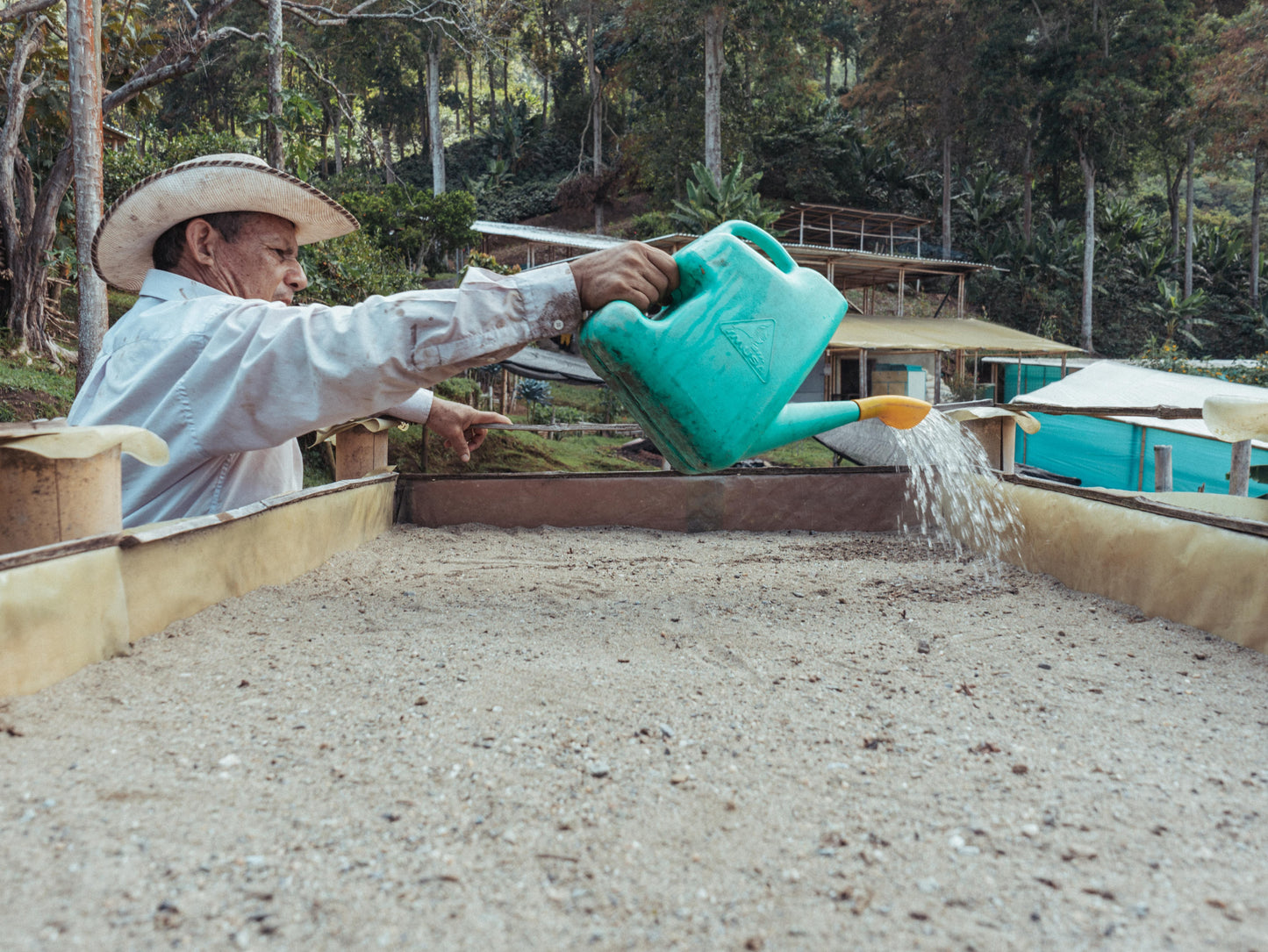
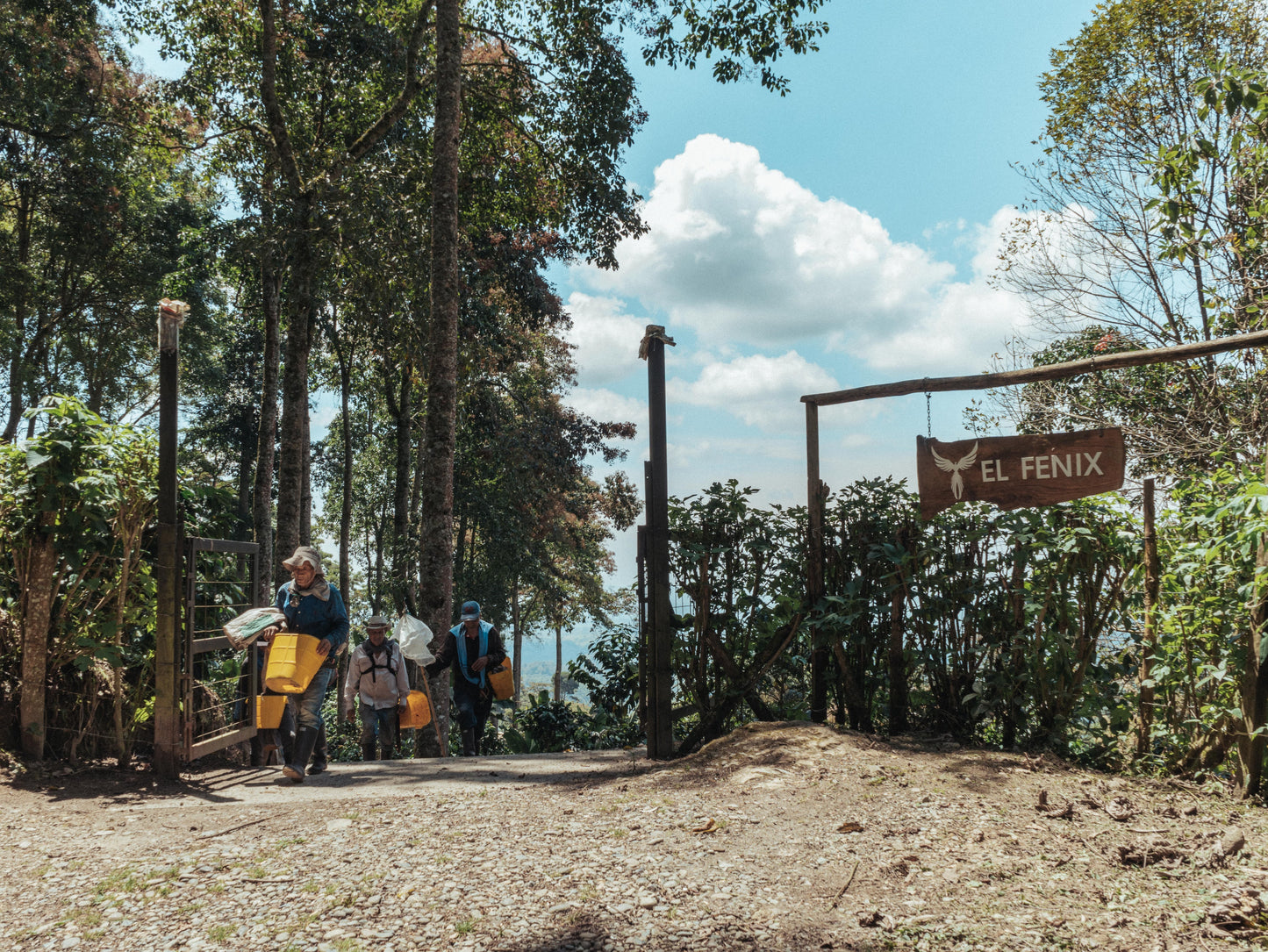
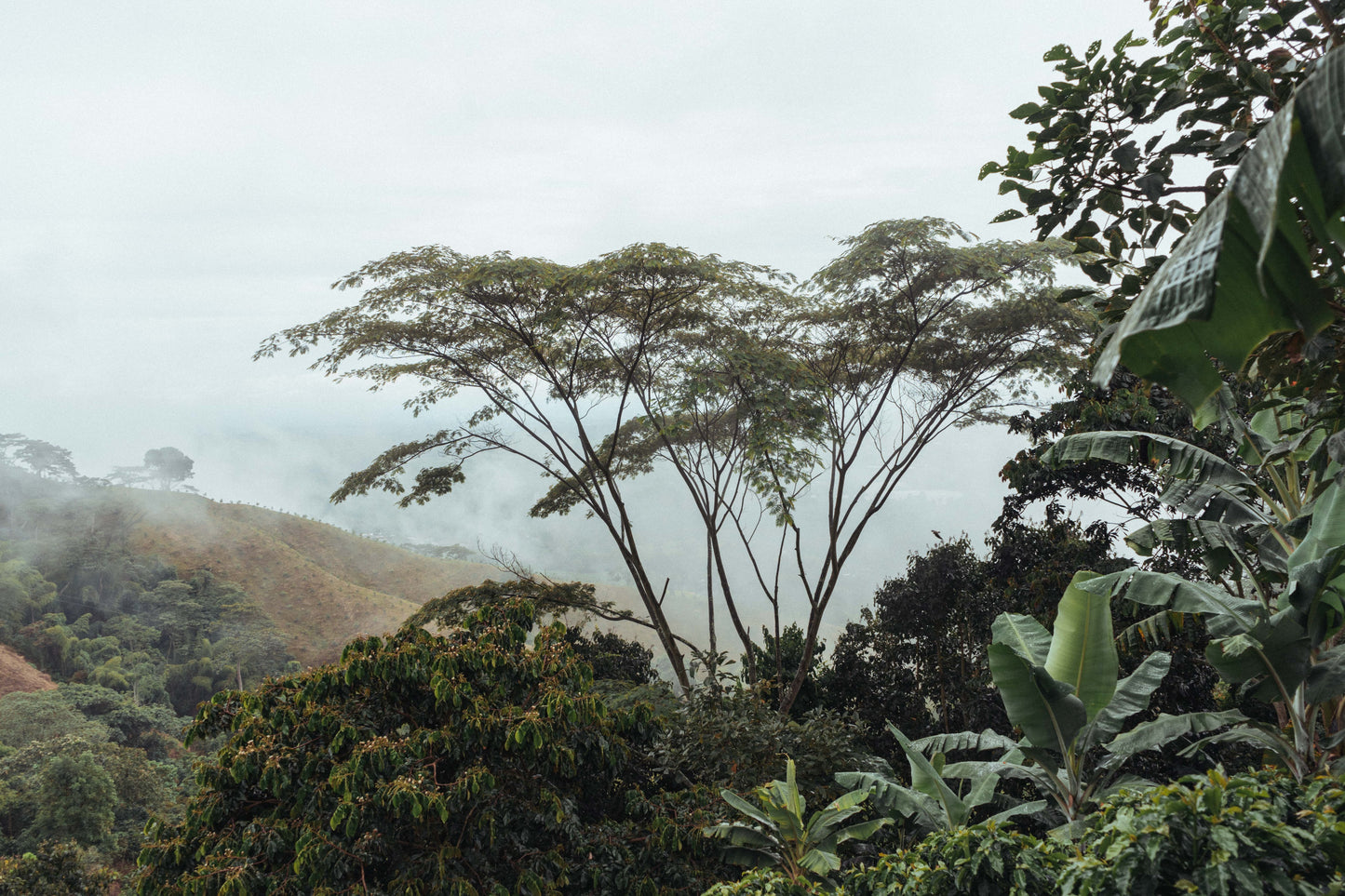
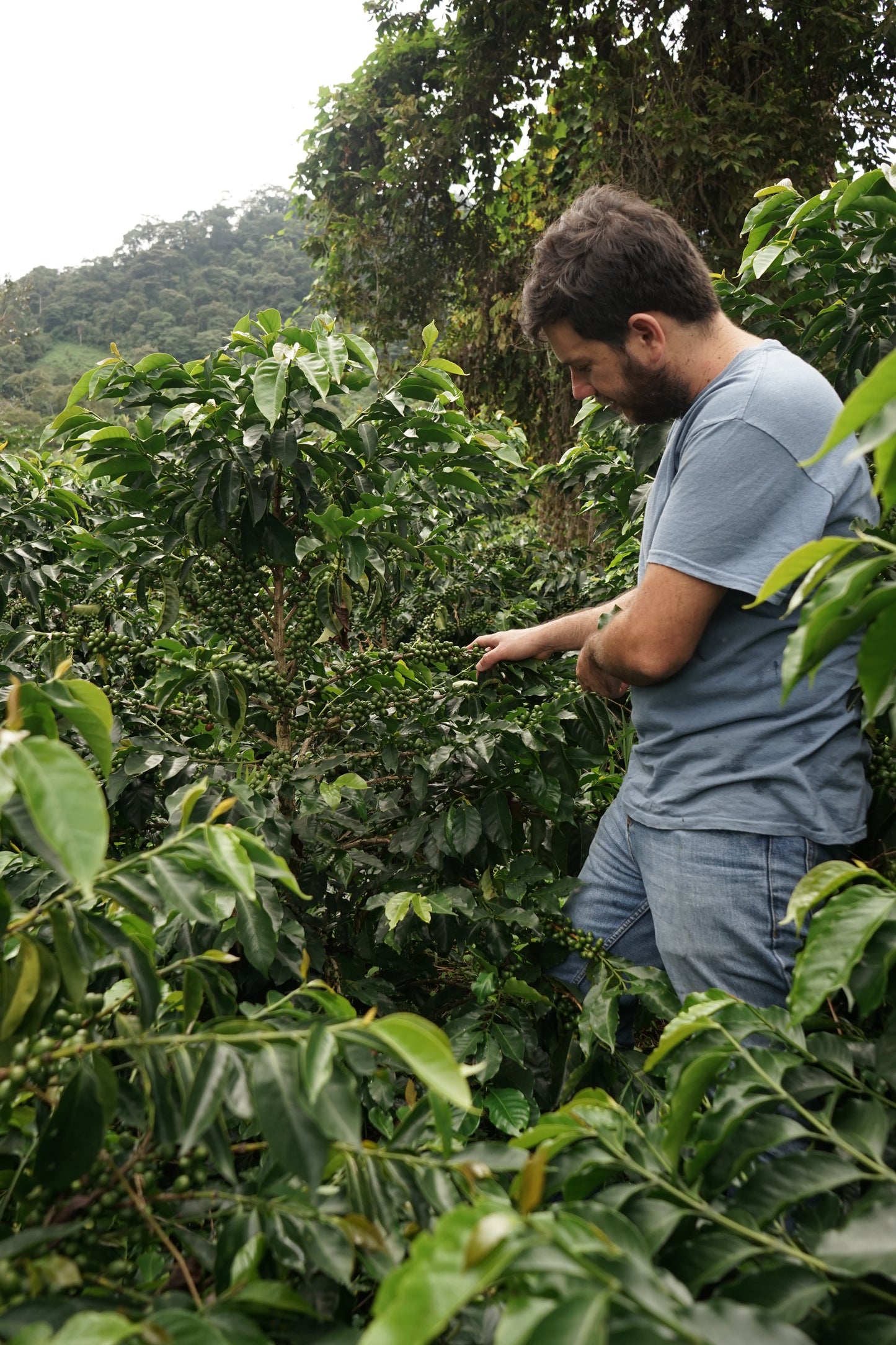
Brew Guide:
Best Brewed with: Filter
Unique roaster influence with each of these two lots, the intersection between genetics, taste preference and technology is on display. We're both using 35kg Loring Roasters -applying our experience and knowledge to create our personal rendition of the coffee.
Best Rested: 2-3 weeks
We advise brewing with soft, clean water and the techniques you know best.
We're tasting in the Anoxic Natural: Process forward aromatics of raspberry shrub & wine gums. In the cup - Tropical fruit punch, white chocolate, rice milk sweetness, as it cools becoming more winey with a long sweet finish.
We're tasting in the Mosto Washed: Mandarin & black tea aromatics, in the cup raspberry acidity with an intense dried fruit sweetness like sticky dates. As it cools the raspberry becomes more cherry; with a touch of marzipan in the finish.
Traceability
Country of Origin: |
Colombia |
Region: |
Calarcá, Quindío |
Producer: |
Miguel Fajardo Mendoza |
Farm: |
Finca El Fénix |
Variety: |
Wush Wush |
Elevation: |
1680 - 1800 MASL (The Wush Wush plot is the highest elevation at El Fénix ) |
Process:
|
Anoxic Natural: Cherries collected from the Wush Wush plot, taken to the mill at El Fenix, before floating & skimming any underripes. The cherries are then placed in a clean tank with a “water pillow” weight for a 72 hr fermentation in an anoxic environment. |
Process:
|
Washed with Mosto: Cherries collected from the Wush Wush plot, taken to the mill at El Fenix, before floating & skimming any underripes then pulping. The wet parchment coffee is placed in a tank, alongside the mosto fermentation liquid, and covered for a 24 - 48 hr ferment. Post ferment, parchment is washed via serpentine density grading channels, and dried on raised beds over 2-3 weeks. |
Import Partner: |
Raw Material |
Harvest |
Crop 24/25, Harvested May-Aug 2024, Arrived UK November 2024 Second harvest purchasing coffee from El Fénix |
The Story
We'd discussed a collab release for ages - working through logistics and what we wanted to showcase. Early on, we realised that choosing an importer we both worked with would be ideal, something fresh crop with a common link that could highlight our differences without competing to one-up each other. As Scenery's final weeks of roasting at PLOT approached, it lit a fire under us to finally make this happen.
Scenery had previously run El Fénix Wush Wush from an earlier harvest (roasted on PLOT's machine during Wednesday sessions) and shared feedback with Miguel about their experience roasting it - what they found challenging and what qualities they hoped to highlight. Miguel, with his processing expertise, took this roaster's perspective and made adjustments that really delivered - the next set of samples that arrived were popping and showed massive improvement, making this almost a three way collab.
We both work with Raw Material, and having tried the fresh crop from El Fénix and knowing the potential involved - it was a clear winner to pick up a box each of the fresh crop Wush Wush lots.
It felt like the perfect match of process, people and flavour to showcase our styles: both enjoying value-added processing, with PLOT typically selecting impeccably clean, juicy lots, while Scenery often explores process-forward profiles with a bit more funk. Both lots perfectly suited to our light and bright approach, and roasted on our respective Lorings!
PRODUCER:
Miguel Farado always had the intention to build a community wet mill, a centralised processing centre to allow producers to improve the quality of their coffee and access speciality markets and pricing. Many producers did not have the ability to dry coffee on their farms, and would sell “wet” parchment or cherry to onwards processors, at whatever commercial rate was given on the day. Those that had the facilities to dry and mill the coffee for export therefore had the most leverage. Allowing these companies to extract the value addition from processing the product for stable international export, and left the producers at the mercy of the local prices.
Miguel knew that if producers could learn to process and dry their coffee better, and had a community location to do so, the benefits would be manifold in the impact on producer’s livelihoods. He originally worked with his father, with the intention to build it on his father’s farm. This original project didn’t work out for various reasons, but through a chance encounter with Matt Graylee, one of the founders of Raw Material, an impactful partnership was formed.
Raw Material’s goal of maximum impact coffee went hand in hand with the idea of building a community wet mill, as well as developing a training centre and experimental farm. Matt and Miguel spent the next 3 years looking for the right land - the right altitude, conditions and a neighbouring community of farms that were at the time underserved in access to the international market.
When they found the spot - a farm once known as Finca El Brasil, in Calarcá, Colombia, they rallied the community of buyers and consumers who supported the work of Raw Material, and through a Kickstarter raised over 200,000 NZ$ to build the processing station and cupping lab at the newly born - Finca El Fénix . The phoenix rising from the ashes of the original wet mill project. As the project got into full steam, the access to processing equipment became better - farms started processing and drying their coffee on site, which reduced the need for the central wet mill.
This evolution opened new possibilities for El Fénix, shifting its focus toward training and experimentation. Today, beyond its wet mill operations, El Fénix serves as a model for sustainable coffee production, offering advanced processing facilities, a rare variety garden (including the Wush Wush plot), quality control labs, and a collaborative space where farmers can access training and share best practices to overcome obstacles to quality production and economic sustainability.
CULTIVAR:
Wush Wush: An Ethiopian landrace named after the Kebele in Keffa it was isolated from (much like Gesha is named after the Gori Gesha forest in Ethiopia), this variety is low yielding and suited only to the highest altitudes. What it lacks in bulk production, it makes up for in delicate and layered complexity.
- Choosing a selection results in a full page refresh.
- Opens in a new window.









